Plundering Switzerland: or, a lot can happen in the middle of nowhere.
To many, Switzerland’s mythology is the stuff of magical fables and fairytales; rose-lined medieval sidewalks, castles as frequent as McDonalds, smiling people hiking through the Alps… I’m here to tell you it is all true. Mostly. Granted, it may not have the regular excitement one finds in larger, bustling cities but Switzerland has its own charms, especially to those willing to explore a little beneath its tidy surface.

(Source)
On a not so lazy Sunday afternoon, a few friends and I headed out towards Evionnaz Adventure Labyrinth, the largest permanent maze in the world. Three kilometers large, the maze is built from 18,000 conifers and promises a madness of obstacles and challenges for its visitors. Jokes of Bowie costumes and hidden treasures aside, we were genuinely excited despite the sneaking suspicion that its main demographic was yes, children. How hard could it be to find all ten treasures anyway? We figured the prize was in the bag.
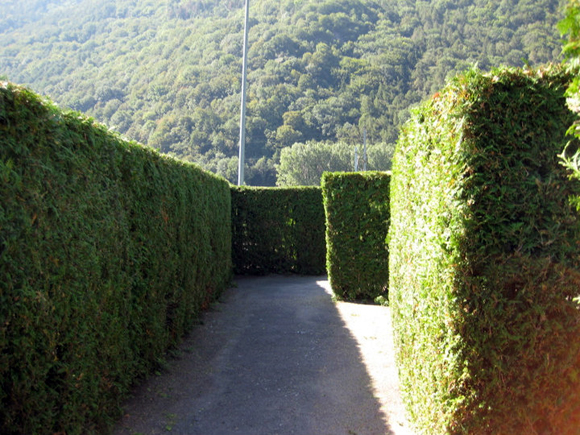
Did we already go around this corner? Your guess is as good as mine. I will save you the suspense and admit that, alas, we did not conquer the almighty labyrinth. Actually, far from it. We only managed to collect a pitiful seven of ten games, and that was after a good couple hours of scrambling up rock walls cruelly set over a moat of water, flying across ziplines, and jumping on trampolines. Of course, that’s not to say our attempts weren’t immensely entertaining. Throughout my labyrinthine spirit quest, I learned two valuable lessons about myself:
- I should not play on trampolines with people twice my size.
- I am a total failure at riding penny farthings. It’s like a bicycle but not. At all.
My only regret is not going into the disturbing-yet-compelling bounce house with a theme I can only describe as Dora the Explorer meets The Hulk.

[Ed. Note: While reading Vanessa’s description, I thought there had to be a better way of articulating what the bouncy castle looked like… Then I scrolled down. Nope. Spot-on. –Sarah]
Having put the labyrinth to bed (or vice versa), we considered our next adventure in a nearby town which was also, coincidentally, in the middle of nowhere. My friend had a handy guidebook that described the adjacent sleepy town of Saint Maurice.
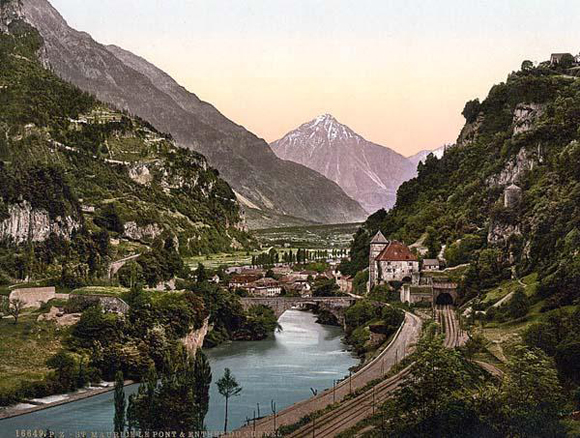
(Source)
“You’d never know that this quiet village (population 4000), named after an early Christian martyr, was the site of an ancient and horrible massacre. Maurice and his Christian companions in a Roman army unit are said to have been cut to pieces in AD 302 for refusing to march against other Christians or worship the ancient gods of Rome.”
No more convincing was needed. We blindly headed to St. Maurice, bellies full of subpar amusement park hot dogs.
One could probably walk the entire length of St. Maurice in under an hour. Our travels led us to the Abbey St. Maurice d’Agaune, a gothic style church built in the 17th century. Upon entering, the abbey seemed like your standard church; pew, candle, pew, candle. Towards the back of the room, however, we noticed a mysterious door wide open. Could you resist this?
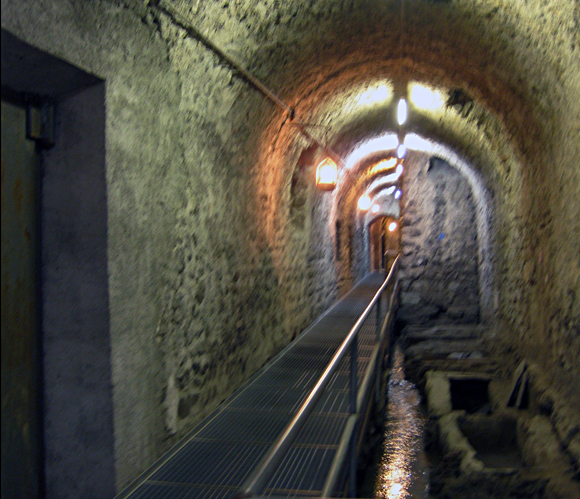
Neither could we. Curious, we stepped onto the steel path, water running steadily beneath us as graves flanked the sides. We were suddenly transported into a world fit more for a Lost episode than a humble church. Approaching the end of the walkway, we looked out in what was most certainly an archaeological site, full of wooden planks and catacomb remains.
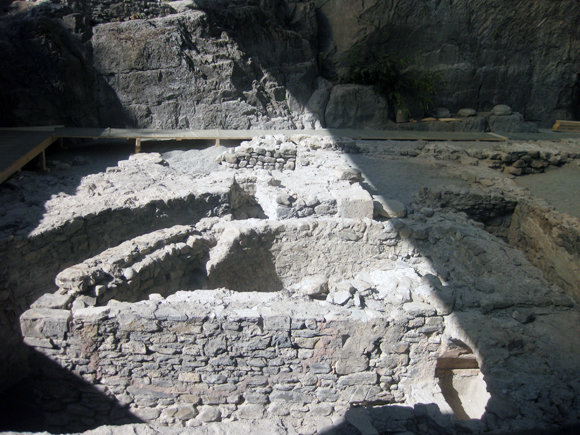
According to legend, in 292 AD, Commander St. Maurice and his Christian legion were massacred by decimation for refusing to comply with Roman religious beliefs. The martyrs were buried in this shrine, and in 515 an abbey was built atop the burial grounds in their honor. Destroyed by a rock slide in the 17th century, all that remains of the abbey are the ruins, alongside the new abbey that was built soon afterwards. The abbey also features some of the richest and best preserved treasures in the West.
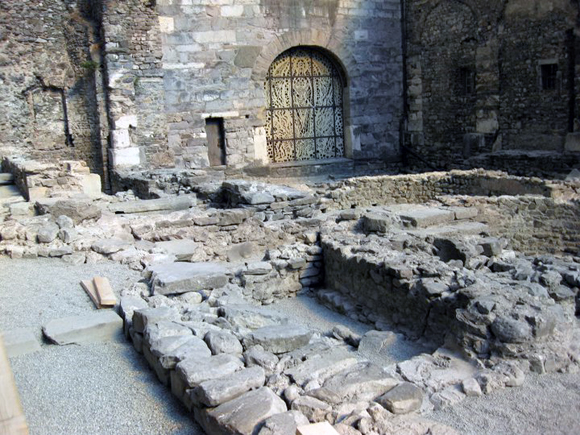
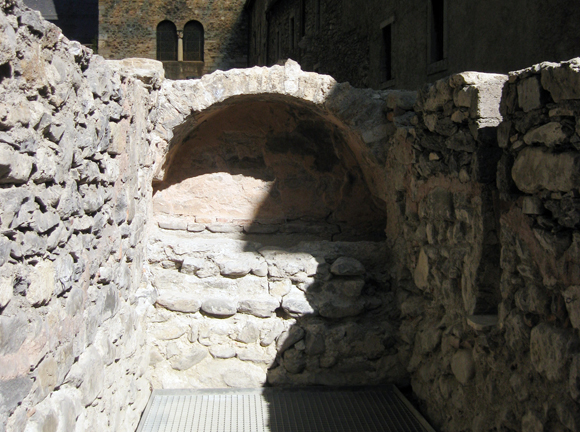
As we were leaving, an elderly tourguide was shocked to see us in the hallway and demanded to know how we got in. After being reprimanded for our misunderstanding, we nonetheless left grinning. And the woman was kind enough to let us know we could come back another time for a guided, paid tour. St. Maurice, you did not let us down.
Labyrinths and catacombs, all in a Swiss day’s plunder.
More information on fully legal, guided tours of Abbey St. Maurice d’Agaune, and details about the Evionnaz Adventure Labyrinth, can be found at their respective entries in the Atlas Obscura by clicking on their respective hyperlinked texts above.





Follow us on Twitter to get the latest on the world's hidden wonders.
Like us on Facebook to get the latest on the world's hidden wonders.
Follow us on Twitter Like us on Facebook